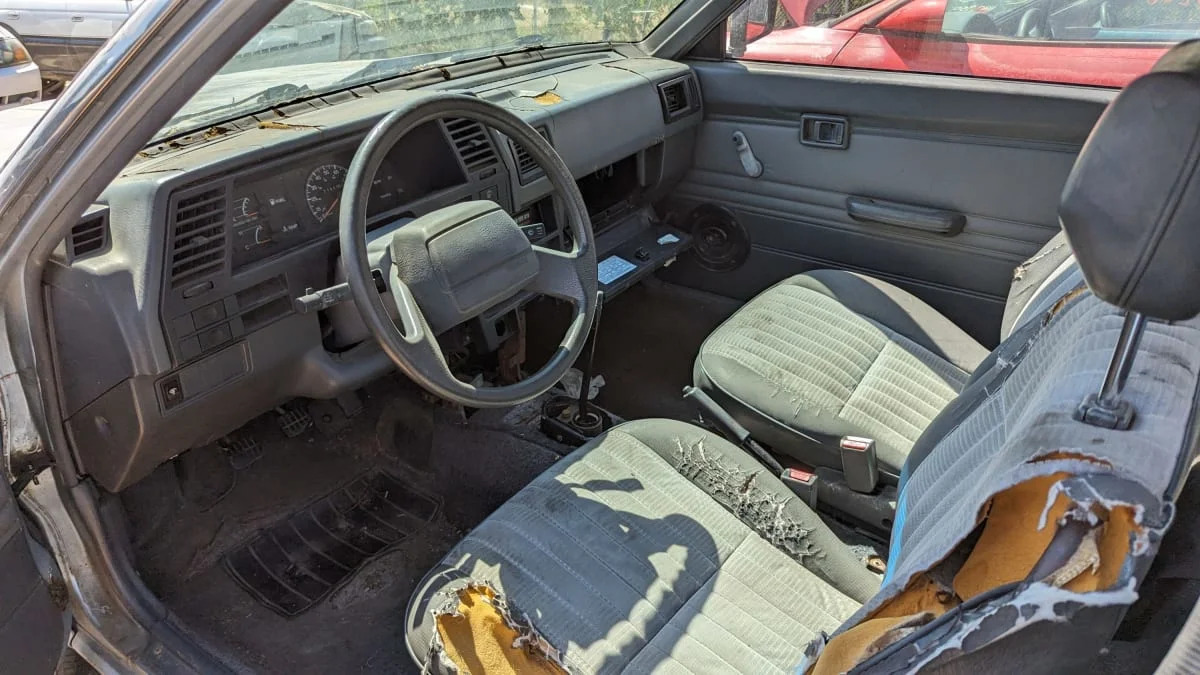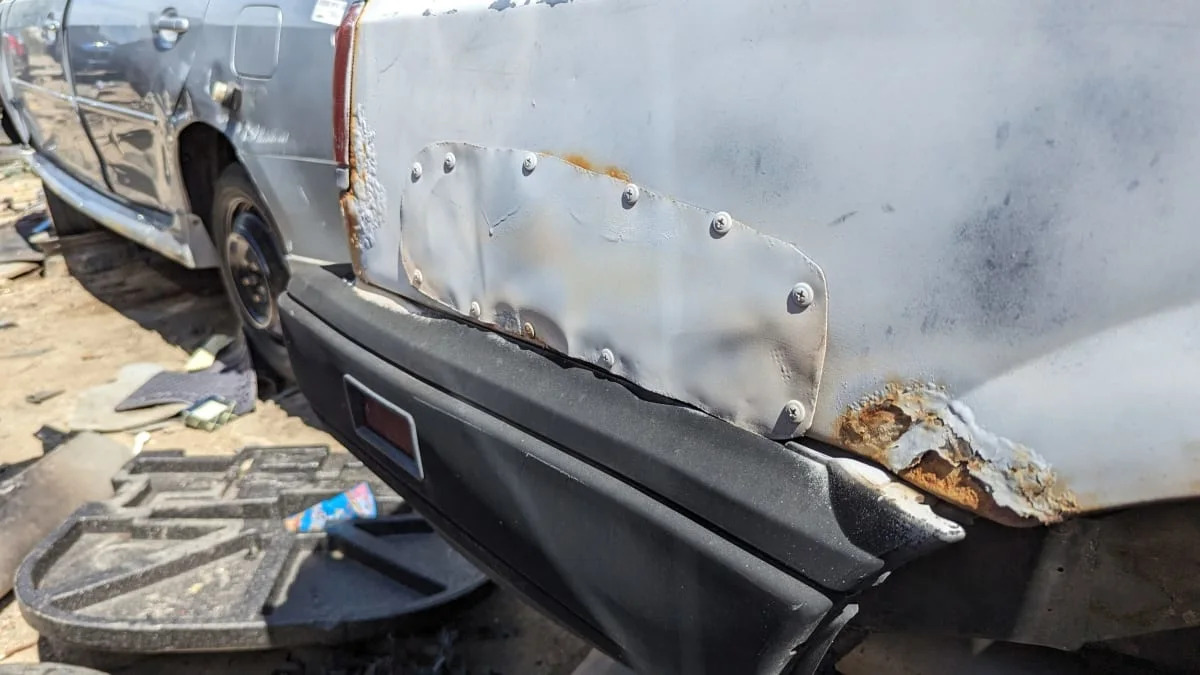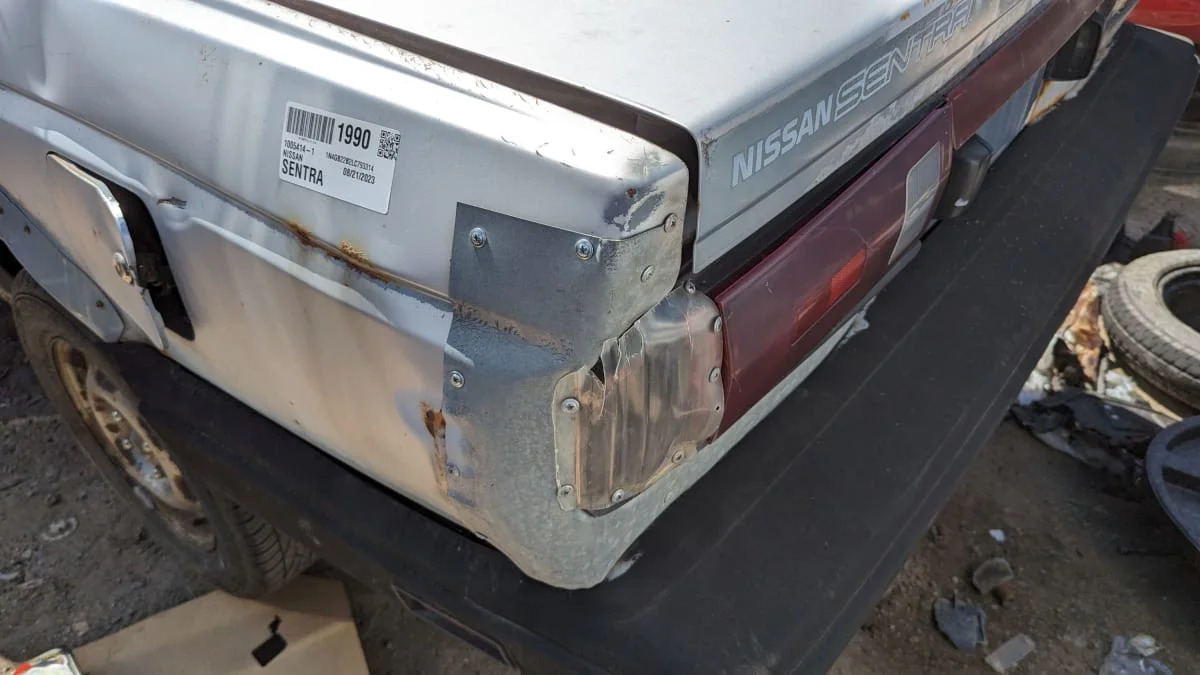Junkyard Gem: 1990 Nissan Sentra with 440K miles

After all these years of scouring car graveyards for interesting examples of automotive history, I know which vehicles are most likely to have odometers boasting intergalactically high final readings: Honda Accords and diesel-powered Mercedes-Benzes (though, to be fair, a Volvo 240 now sits at the top of my junkyard odometer standings, and the most-traveled Mercedes-Benz in those standings is a gasoline-powered C-Class). Discarded Toyotas with better than 300,000 miles are a dime a dozen, too, but I’ve had a tougher time finding junkyard Nissans that got past the magical 300K mark. Today’s Junkyard Gem not only puts Nissan into my 400K Junkyard Odometer Club, it reaches 8th place overall and knocks a Toyota out of the Top 10 in the process.
Prior to now, I’d only documented four used-up Nissans that made it past 300,000 miles: a 1994 Maxima with 364K miles, a 1987 Maxima with 341K miles, a 1996 Quest with 338K miles (yes, that one was built by Ford) and a 1986 200SX with 309k miles. This odometer has some reel misalignment, but I think it’s trustworthy (unlike, for example, the jumbled-numbers mess that made a 1982 Volkswagen Rabbit appear to have driven 930K miles during its life).

They should be proud of this car in Yokohama, though it was assembled at Nissan’s plant in Smyrna, Tennessee, and is thus just as American as any Chevy or Ford. In fact, this is the highest-mile North America-built car I’ve ever found in a boneyard. It beats a Marysville-built 1991 Honda Accord with 435,471 miles, a Marysville-built 1996 Honda Civic with 435,028 miles and a St. Thomas-built 2002 Ford Crown Victoria Police Interceptor with 412,013 miles.

I suspect that the Mexican-market Nissan Tsuru (which was a 1992 Sentra that stayed in production through 2017) we saw earlier this spring had way more miles on it than the 442K kilometers (about 275K miles) showing on its odometer, since the entire dash assembly clearly had been swapped in from another car and the whole collection of parts appeared to be a FrankenTsuru knocked together from the remains of a dozen beat-to-death Juarez taxis. Still, that’s just speculation.

The amazing thing here isn’t just that the Sentra was the cheapest new Nissan sold here in 1990. It’s that this car is the cheapest possible Sentra that year: a base two-door sedan with four-speed manual transmission and a sticker price of $7,299 (about $17,514 in 2023 dollars). The only extra-cost option I could find in this car was the right-side mirror, and I suspect that was an upgrade performed long after this car’s initial purchase.

Believe it or not, the four-on-the-floor manual transmission was available in new US-market cars all the way through the 1996 model year. It was considered quite obsolete in 1990, however.

I daily-drove a base ’90 Sentra with four-speed manual for a while during the early 2000s, and it reminded me of the simple and reliable Datsuns of the 1970s. I’d picked up this little red devil for $75 at the notorious City Tow car auction in San Francisco, where it had washed up due to something like $40,000 worth of unpaid parking tickets and late fees (all earned on the same block of Van Ness). You’d get a big stack of lien-sale paperwork when you bought a car at those auctions back then, and I learned that its title had been held jointly by a young woman and her trust fund. I sold the Sentra to make room for a more useful (and five-speed equipped) 1985 Toyota Tercel wagon, also obtained for a double-digit price at the City Tow auction, and learned that the Nissan’s engine failed a year or so later due to the timing chain getting loose and gnawing a hole through the front of the block.

Air conditioning? It is to laugh!

This car came with a 1.6-liter SOHC straight-four rated at 90 horsepower and 96 pound-feet, and this may even be the original engine (though a car with this many miles is likely to have had at least one engine swap during its life).

The interior is very worn, as you’d expect, but I don’t see signs of abuse or abuse-grade neglect. You can’t keep a car alive this long if you don’t take good care of it.

It rusted in the usual areas, then got some cheap-but-effective metal patches.

Cars generally don’t oxidize this badly in Colorado, so I think this one started out in a rustier place.

These patches bought a few more years of life on the road.

The key was still with it at the end.
The Excel started at $5,899 in 1990, but Nissan wasn’t wrong about the Sentra being a better car.
The ’90 Sentra’s Mexican sibling was el automóvil más codiciado de México, according to this ad. More than the Mercury Cougar? The Chrysler Phantom?







